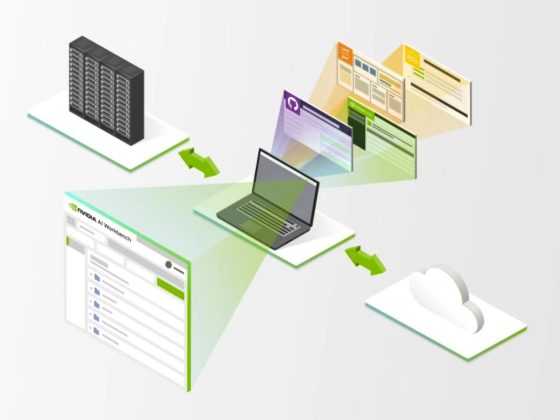I. Introduction
Web applications keep getting more advanced and multifaceted, providing users with tons of features. But this also makes them more vulnerable to performance problems, especially when handling lots of requests simultaneously.
That can lead to slow response times, crashes, errors, and even downtime – all of which hurt the user experience and company reputation.
From our partners:
To make sure web apps deliver high-quality service and meet user expectations, it’s crucial to do load testing. Load testing simulates real user scenarios and measures how the app handles different load levels. It can identify and fix bottlenecks, optimize resources, improve scalability, and ensure reliability and availability.
Mastering load testing for web apps takes understanding the basics, the process, tools, best practices, common pitfalls, and future trends. So, let’s dive in and take a look.
II. Load Testing Basics
Before we get into the process and tools for load testing, let’s first define what load testing is and the key metrics used.
Definition
Load testing simulates realistic user traffic to see how a web application handles varying load levels. It should be done on all the steps of the software lifecycle like development, integration, and deployment. The main goals are to:
- Verify that the app can handle expected and peak traffic without hurting performance.
- Find and fix bottlenecks that cause slow responses, crashes, errors, or downtime.
- Optimize resource use like CPU, memory, disk, and network by tuning configs.
- Improve scalability by determining max capacity and throughput, and how to increase them.
- Ensure reliability and availability by testing recovery from failures and consistent performance.
Key Metrics
To evaluate performance under load, we measure key metrics like:
- Response time – how long requests take to process and respond. Affects user satisfaction so should be low.
- Throughput – requests handled per unit of time. Indicates efficiency and capacity so should be high.
- Error rate – the percentage of failed requests. Indicates reliability so should be low.
- Resource utilization – resources consumed during testing like CPU, memory, etc. Should be within acceptable limits.
III. The Load Testing Process
The load testing process consists of four main steps: identifying workload and performance requirements, test scenarios and environment setup, test execution, and result analysis.
Identifying Workload and Performance Requirements
The first step in load testing is defining the expected performance and goals under different loads. This includes:
- Performance requirements – The minimum response time, throughput, etc. that should be met.
- Workload – How users interact with the app. This covers user types, actions, locations, concurrency, arrival rate, think time, and more.
- Load levels – The normal, peak, and stress loads that will be tested.
These points should be realistic, based on business needs, user feedback, historical data, industry benchmarks, and other sources.
Test Scenarios and Environment Setup
The next step is designing a test plan and setting up the test environment to execute the load tests.
The test cases should cover the most critical and frequently used functions, as well as the riskiest scenarios under load. They should align with the workload model and load levels.
The test environment should mirror production as closely as possible in terms of hardware, software, network, configs, data, etc. It should include:
- Load generator – Generates and sends requests per the test cases and workload model.
- Load balancer – Distributes requests across multiple app instances or servers.
- Application under test – The app being tested.
- Monitoring system – Collects and displays performance metrics of the app and components during testing.
Test Execution and Result Analysis
The third step in load testing is to execute the test cases and analyze the results.
The test execution should be done according to a predefined test plan that specifies the order, duration, frequency, and intensity of each test case. The test execution should also be monitored and controlled by adjusting the load levels, stopping, or restarting the tests, etc.
The result analysis should be done by comparing the actual performance metrics with the performance requirements and identifying any deviations or anomalies.
The result analysis should also include identifying and diagnosing the root causes of any performance issues, such as code defects, configuration errors, resource bottlenecks, etc.
Test Reporting and Improvement
The final step is reporting the findings and recommendations and implementing improvements based on the analysis.
The test report should summarize the objectives, methodology, environment, execution, results, analysis, findings, recommendations, and conclusions. It should include supporting data like graphs, charts, tables, screenshots, logs, etc.
Improvements may involve applying fixes or optimizations to the code, configs, architecture, design, etc. Changes should be verified by re-running load tests to validate their effectiveness.
IV. Load Testing Tools
A diverse array of tools exists for load-testing web applications, each with unique capabilities.
JMeter, an open-source Java tool, enables load generation and performance measurement across various protocols like HTTP, WebSocket, and FTP. It provides recording, scripting, dynamic data simulation, result analysis, and more. Extensibility through plugins is a key benefit.
LoadRunner by Micro Focus excels at load testing beyond just the web, with support for mobile, IoT, and media. Scripting uses languages like C and JavaScript. Visual analysis is facilitated through dashboards.
Gatling, written in Scala, separates test logic from execution for scalability. Recording HTTP sessions and converting them to code accelerates test creation. Interactive charts empower insightful results analysis.
Locust leverages Python for load test scripting. Its master-slave architecture readily scales simulated users across multiple machines. An intuitive web interface displays live test metrics.
These tools and many others each have unique strengths. Careful selection based on the technology, test environment, metrics, integrations, and workflows to be assessed is advised. Thorough evaluation guides the way to the optimal choice.
V. Best Practices and Common Pitfalls
Mastering the art of load testing requires adhering to key best practices while avoiding frequent missteps.
To conduct effective load testing:
- Set clear, realistic performance targets based on business needs, user feedback, historical data, and industry benchmarks. Don’t define criteria that are unattainably high or low;
- Design comprehensive test cases that cover critical functions and probable high-risk scenarios under load. Align cases to workload models and load levels;
- Pay special attention to possible peak load scenarios: new marketing campaign planned and a lot of new users expected? Make sure to test the registration and login parts. Black Friday coming? Check scenarios for huge simultaneous checkouts;
- Build a test environment that closely resembles production in terms of hardware, software, network, configs, and data. Isolate it from anything that could skew results;
- Use capable, reliable load-testing tools that can simulate workflows and measure metrics accurately per the technology stack. Avoid inappropriate or unstable tools;
- Make sure test servers and bandwidth can generate the load required for testing. Using one request-generating server to test 100 servers might not generate the required load that would result in incorrect test results;
- Execute load tests per a systematic plan defining order, duration, frequency, and intensity. Monitor and adjust load levels carefully during execution;
- Analyse results by comparing metrics to criteria and diagnosing issues through data visualization and statistics. Avoid raw data or unclear graphs;
- Implement optimizations, then re-test to validate improvements. Don’t deploy changes without verifying effectiveness.
Common pitfalls to avoid:
- Inaccurate performance targets leading to false positives or negatives;
- Incomplete test cases missing critical functions and scenarios;
- Unrealistic test environments that skew metrics due to differences from production;
- Poorly matched tools that can’t simulate workflows, generate required load, or measure metrics properly;
- Lack of execution plan causing disorganized, inefficient test runs;
- Weak analysis lacking visualization and statistics to surface meaningful insights;
- Failure to re-test and validate the impact of optimizations before deployment.
VI. Future Trends in Load Testing
Load testing continues to evolve as web development advances. Key emerging trends include:
- Cloud-based load testing leverages scalable cloud computing services like BlazeMeter and Grafana Cloud k6 for benefits such as flexibility, cost savings, and geographic reach. The cloud enables large-scale distributed testing.
- Artificial intelligence and machine learning are transforming load testing through intelligent automation. AI can generate realistic workloads, predict metrics, diagnose issues, and recommend solutions. Tools like Dynatrace, Neoload, and Apica incorporate these technologies.
- Integrating web application security testing (WAST) helps identify and prevent vulnerabilities under load. OWASP ZAP, Nmap, and Burp Suite are examples of WAST tools that can detect risks like denial-of-service attacks and cross-site scripting.
Mastering these emerging practices will be key for load testing excellence as the web evolves. Forward-looking organizations are already putting them into practice.
VII. Conclusion
Mastering load testing is critical for releasing high-performing web applications. It requires blending technical and analytical expertise to model realistic user behaviors, select appropriate tools, develop comprehensive test cases, conduct controlled experiments, and extract meaningful performance insights.
As technology evolves, agile adaptation alongside diligent mastery of load testing fundamentals will remain key.
By building robust in-house competencies or working with experienced partners, organizations can gain a significant competitive advantage through expertise in this vital discipline.
References
Top 15 Open-Source Load Testing Software 2023 | TestGuild
9 Load Testing Best Practices (Don’t Make These Mistakes) (testguild.com)
Load testing best practices | Cloud Run Documentation | Google Cloud
What is Load Testing: Process, Tools, & Best Practices | BrowserStack
Load Testing Best Practices (multiple.dev)
Image credits: Pixabay – Mudassar Iqbal
By: Maria Rogova
Originally published at: Hackernoon
Source: cyberpogo.com
For enquiries, product placements, sponsorships, and collaborations, connect with us at [email protected]. We'd love to hear from you!
Our humans need coffee too! Your support is highly appreciated, thank you!








